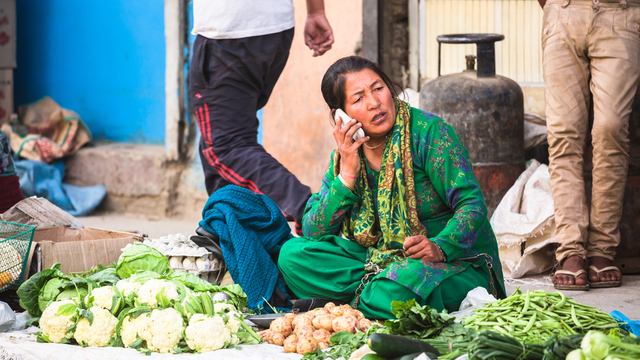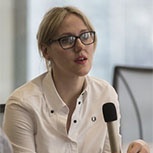Closing the Gender Gap: The Role of Inclusive Insurance in Empowering Women Around the World
When Mary Anyango contracted typhoid in Kenya, her family took her home to die. In nearby Uganda, Betty Waswa suffered complications while giving birth, was hospitalized, and survived. Both women lived on about USD 2 per day. What made the difference? Betty had microinsurance.1
This reminds us that these painful disparities should not persist, and that all of us have a role in addressing them for generations to come. In the words of the late Nobel Peace Laureate Desmond Tutu of South Africa, “If we are going to see real development in the world, then our best investment is in women.”
And there is no better investment, we believe, than in life and health insurance.
Insurance coverage does more than literally save women’s lives. It lifts up families – and entire communities. It provides vital support for all women as they face the financial challenges of aging in uncertain times. And it frees women to pursue changing roles outside of the home.
In many low-income countries, we find that women act as household risk managers, responsible for stretching resources to meet the needs of the elderly, children and other vulnerable relatives and dependents2. Unmanaged, a single financial shock or health setback can ripple through a family and affect relatives, and the entire society.
Unmanaged, a single financial shock or health setback can ripple through a family and affect relatives, and the entire society.
Women with lower earnings have traditionally coped with any unexpected loss by selling assets, pulling children out of school to earn income, or relying on networks of neighbors or relatives or sometimes crippling lending mechanisms in the informal economy. These tactics can help a woman survive – but not thrive. Without financial protection, she is often forced to divert resources that could be invested in health, education, a new business, or more. Cycles of intensifying poverty and instability often result.
And women who have far higher levels of income are not exempt from financial reverses due to job loss, childcare, health problems, or uncertain paychecks. Women around the world must often manage such economic stressors alone, without the support of any protection products.

Reaching Underserved Women, Transforming Societies
The global market potential of insurance for women is estimated to be around $1.7 trillion, with emerging economies expected to account for over fifty percent of the total market.3 The insurance industry has a unique role to play in helping bridge this protection gap. Far too often, insurance is viewed as too costly or out of reach by consumers. Even when policies are available and affordable, they are often not tailored to meet women’s needs.
But perceptions are changing. In recent years, we have watched the explosive growth of microinsurance. This extremely affordable form of insurance is specifically designed to protect against small or “micro” risks in exchange for regular premium payments proportionate to the likelihood and cost of the risk involved.
Microinsurance offers women a propitious alternative to utilize their scarce assets more productively and manage risk. Recent market innovation takes advantage of current low insurance penetration rates and the availability of low-cost mobile devices to reach deep into underserved and unbanked communities.

By delivering cover through the use of relatively low-cost channels, microinsurance opens a path to financial protection for tens of millions of women who otherwise would find insurance too difficult or costly to acquire, and who might be too expensive for insurers to reach. Indeed, microinsurance – specifically targeted at women – provides a valuable means to stabilize and improve income for individuals and households, thereby contributing to sustainable economic development.
Microinsurance opens a path to financial protection for tens of millions of women who otherwise would find insurance too difficult or costly to acquire.
Small Policies with Huge Impact
Microinsurance has grown significantly over the last decade, with over 253 million people currently covered by at least one microinsurance policy across emerging markets4. On average, women account for roughly 50% of the lives covered, and exciting advancements in insurtech are rapidly transforming the industry. This has been vital in reducing the barriers in the delivery and administration of products, enabling access for millions of customers.
RGA is excited by efforts to make the industry more inclusive and is actively investigating and supporting these emerging innovations. For example, RGA has invested in Inclusivity Solutions, an insurtech company that works with mobile operators and other mass-market aggregators to deliver digital insurance solutions that meet the needs of emerging customers. To date, Inclusivity Solutions has provided protection for one million previously uninsured lives across Africa.
RGA has invested in Inclusivity Solutions, an insurtech company that works with mobile operators and other mass-market aggregators to deliver digital insurance solutions that meet the needs of emerging customers.
Furthermore, microinsurance has begun to make inroads even into the most advanced economies due to its flexibility and affordability. So have related innovative insurance models. Consider another underserved group: middle class millennial women (born between 1981 and 1996). In the United Kingdom alone, there are 8.5 million who annually spend 8% of their take-home pay on health care, yet surveys suggest these women often lack confidence in dealing with finance issues and continue to defer and delay decisions about future financial protection. Bottom-line, the insurance industry has not enabled women to access insurance effectively—if they are approached at all, it is typically as mothers.
Bottom-line, the insurance industry has not enabled women to access insurance effectively – if they are approached at all, it is typically as mothers.

At a time when the direct-to-consumer market is saturated and customer acquisition is expensive, insurers are missing a significant opportunity.
RGA and our digital accelerator, RGAX, are exploring such solutions in the region. Our team, in conjunction with Moody Month, an emerging femtech startup in the U.K., has developed Plan V Care, a proposition designed for the underserved U.K. female millennial market and aims to transform women’s access to insurance.
RGA, in conjunction with Moody Month, an emerging femtech startup in the U.K., has developed Plan V Care, a proposition designed for the underserved U.K. female millennial market and aims to transform women’s access to insurance.
Partnering with Moody Month has provided unique insights, including how this target audience of women prefer to purchase financial services products and what types of offerings are of greatest interest. Cancer was a leading worry, so Plan V Care developed a cancer-only product to start. The offering relies on online distribution and underwriting to reach women who currently may feel shut out of traditional insurance markets and offers coverage that addresses the unique needs of women experiencing this multifaceted diagnosis.
Conclusion
Creating innovative risk management solutions for women is crucial. If appropriately designed and administered, microinsurance policies have the potential to reduce the financial vulnerability of women around the world.
But as encouraging as recent growth has been, most women are still largely unserved. At RGA, we see a real opening to further embrace innovative, gender-sensitive product designs, unlock the potential of data-based insights, and empower women – and men –with vital coverage. Most of all, we see a chance to fulfill our single, powerful purpose – to make financial protection available to all.
Join our community of innovators eager to transform the life insurance industry.
Subscribe to the RGAX blog >
References
- McCord, Michael J. “The insurance sector and its economic potential for developing countries,” Insure Magazine, December 2007. This story is a composite and the names have been changed
- Banthia, Anjali, Susan Johnson, Michael J McCord and,Brandon Mathews (2009). “Microinsurance that works for women: Making Gender Sensitive microinsurance programs.” ILO.
- International Finance Corporation (IFC) 2015. She for Shield: Insure Her to Better Protect All.
- Microinsurance Network. The Landscape of Microinsurance, 2020

